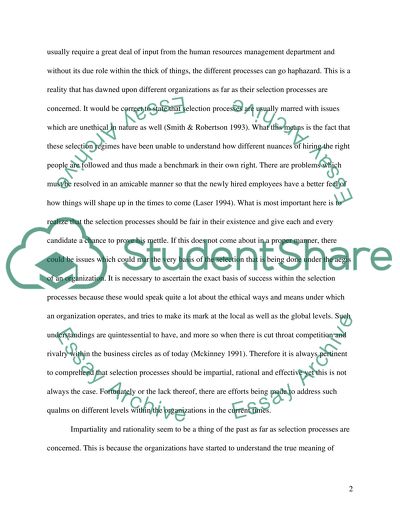Cite this document
(Todays Selection Processes Are Impartial, Rational and Effective Essay - 1, n.d.)
Todays Selection Processes Are Impartial, Rational and Effective Essay - 1. https://studentshare.org/human-resources/1565877-todays-selection-processes-are-impartial-rational-and-effective-to-what-extent-is-this-statement-a-myth
Todays Selection Processes Are Impartial, Rational and Effective Essay - 1. https://studentshare.org/human-resources/1565877-todays-selection-processes-are-impartial-rational-and-effective-to-what-extent-is-this-statement-a-myth
(Todays Selection Processes Are Impartial, Rational and Effective Essay - 1)
Todays Selection Processes Are Impartial, Rational and Effective Essay - 1. https://studentshare.org/human-resources/1565877-todays-selection-processes-are-impartial-rational-and-effective-to-what-extent-is-this-statement-a-myth.
Todays Selection Processes Are Impartial, Rational and Effective Essay - 1. https://studentshare.org/human-resources/1565877-todays-selection-processes-are-impartial-rational-and-effective-to-what-extent-is-this-statement-a-myth.
“Todays Selection Processes Are Impartial, Rational and Effective Essay - 1”. https://studentshare.org/human-resources/1565877-todays-selection-processes-are-impartial-rational-and-effective-to-what-extent-is-this-statement-a-myth.


